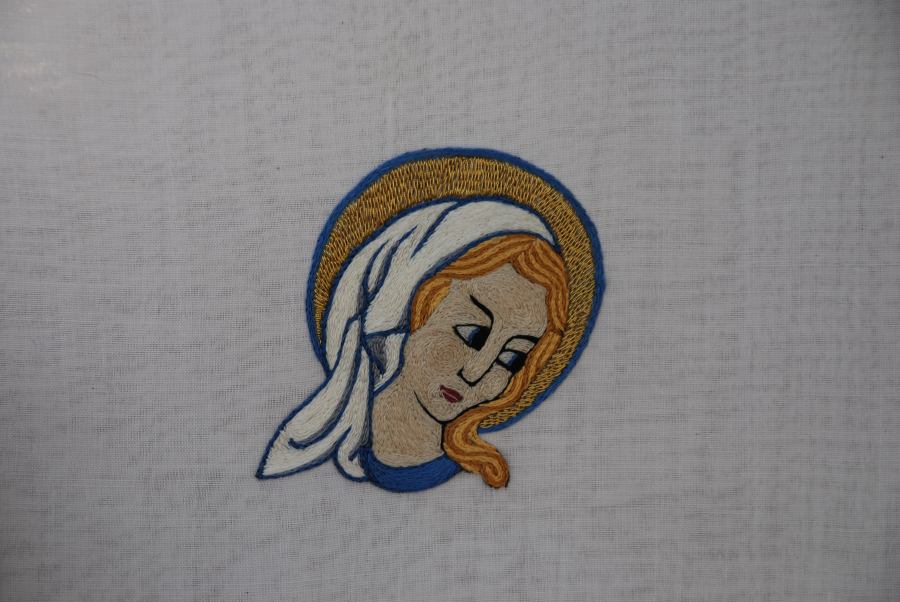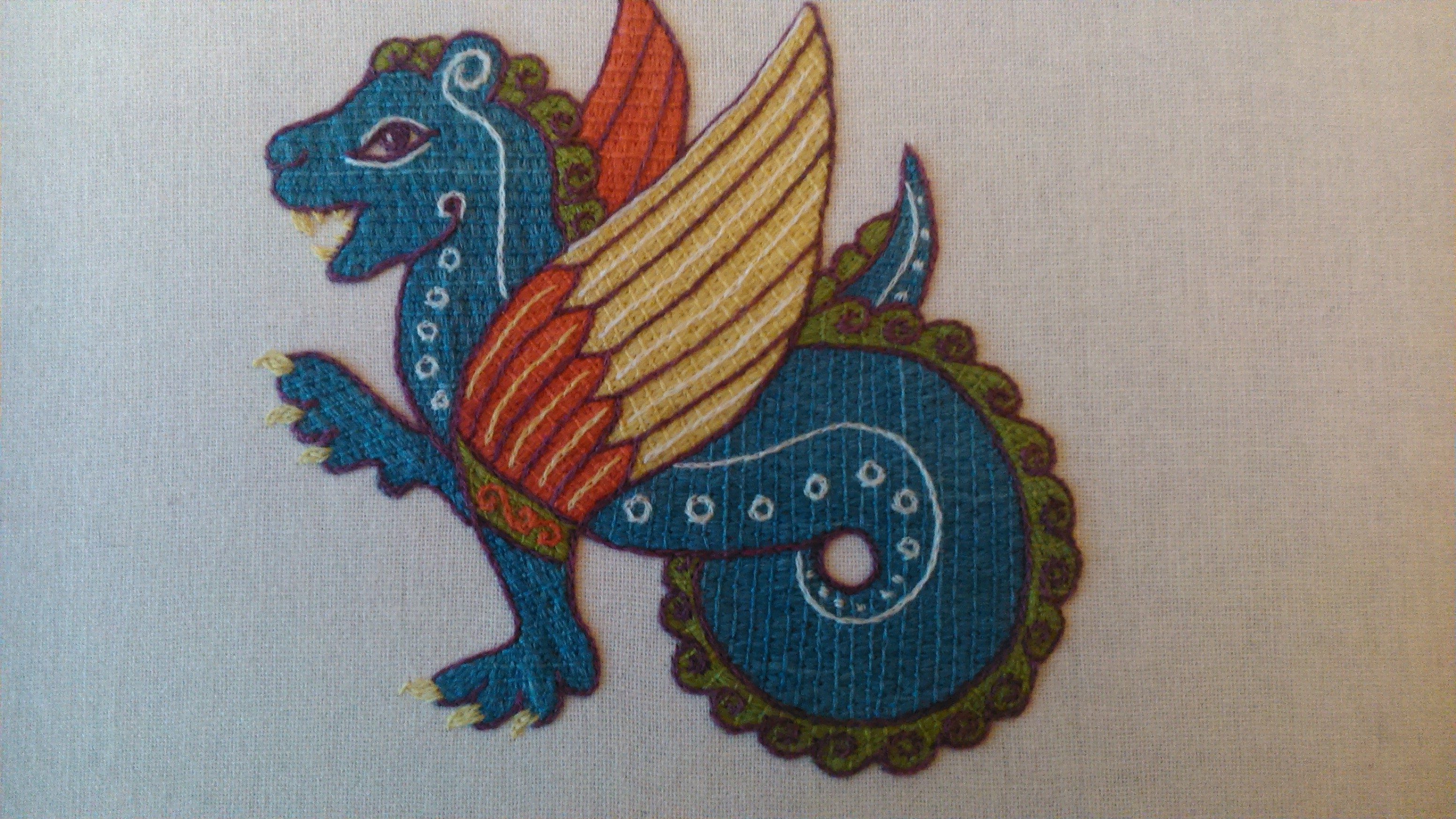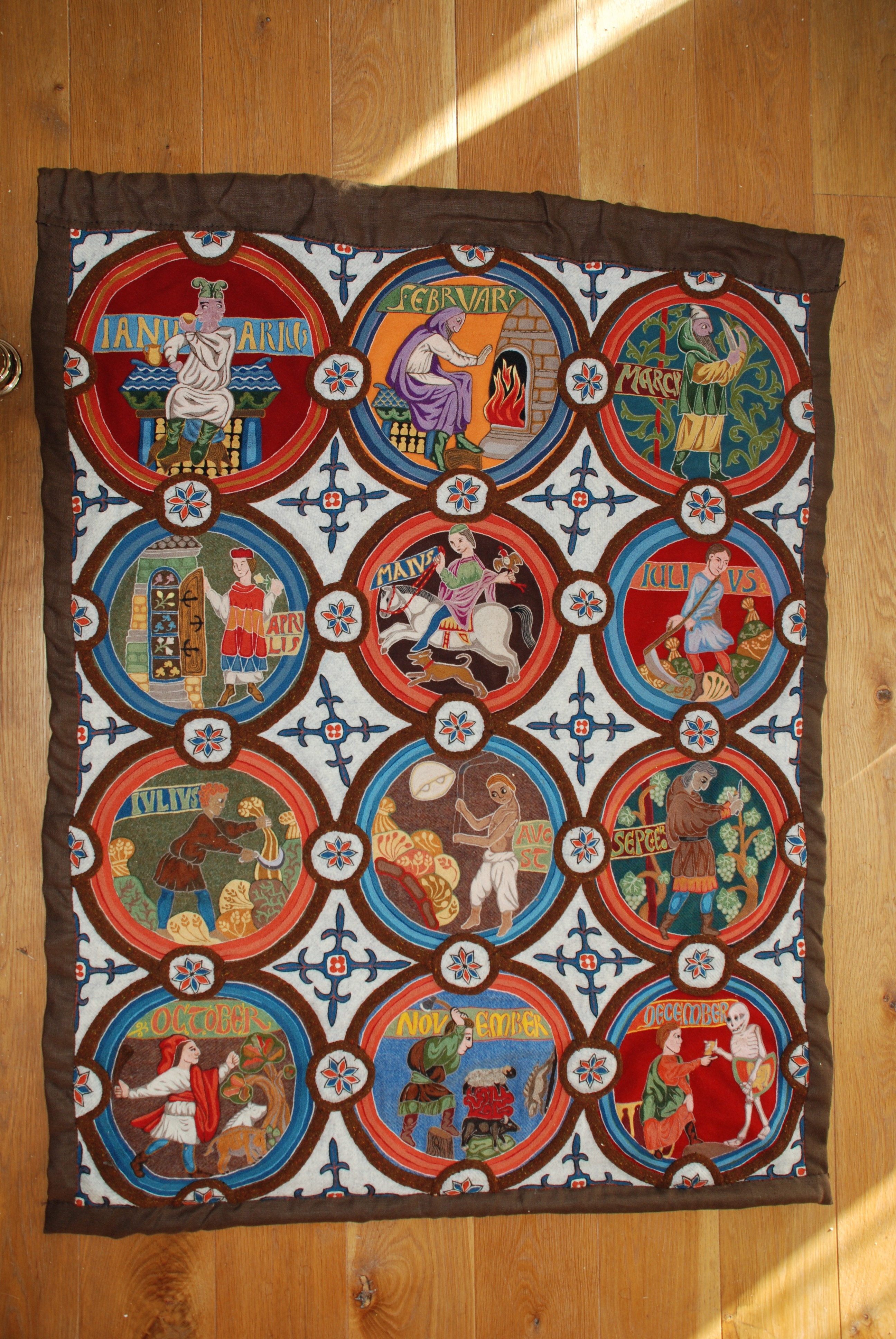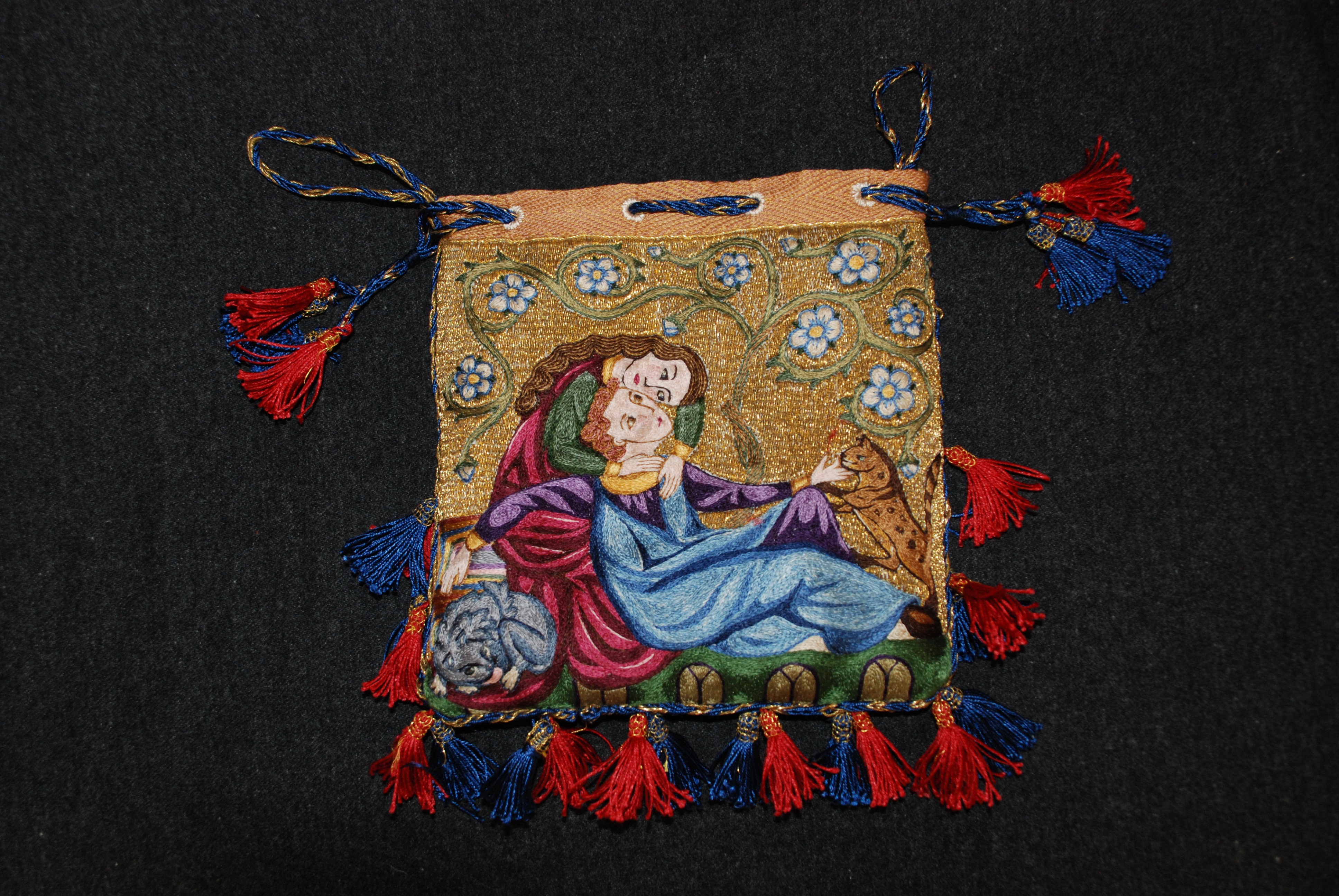bayeux tapestryzzzzzzzzz…
Yes, I know, The Bayeux Tapestry is pretty damned predictable in terms of embroidery in a medeival re-enactment context, but allow me to explain.
Many years ago we ahd a small local museum called Margrove heritage centre. It was very popular with school parties, and back in those days there wasn’t much re-enactment going on in winter, so we used to loan them stuff for thier winter exhibitions. One exhibition was based around life at Skelton castle, and got one of the earliest rounds of lottery funding.
We loaned them quite a bit of stuff for that, and I also made several replicas of sections of the Bayeux Tapestry to illustrate aspects of early medeival life. One at least is still in the local museum department’s resource collection. However, about three years ago I found this unfinished piece in the bottom of a chest. It must have been there for almost fifteen years and I’d completely forgotten it’s existance, I must have just shoved it out of the way when I hadn’t finished it in time for opening night.
believe it or not those are naturally dyed threads – my first attempt if I remember rightly. There had never been intention to embrodier the borders, but luckily I’d left enough space to do so.
Anyway, I’ve kept it hanging around thinking that i might as well finish it once I’d got the antependium out of the way. Since I find myself ebtween projects for the next few weeks I hought I might as well get on with it, since although it’s a bit boring it would be useful sometimes to have a piece of bayeux tapestry in my display. I’m going to use the leftover wools from the antependium, which are much finer than the ones used for the rest of the piece, but never mind




















Nice. I particularly like the automatic missiles heading their way towards the group on the right in the lower section. 😛
they’re doing theri best to improvise a nuclear bunker fro a few old shields though
Titanic!!!
my heart will go on
Of course. Everyone has leftover pieces of Bayeux Tapestry in their chests.
It looks beautiful as all your embroidery does, and I think the Heritage Centre would be thrilled to have it for display!
alas, margrove is no mmore, the council closed it down for not making enough money (that was the official reason, but the centres only income came from the gift shop, merchandise for which came via the council, who refused to send them anything to sell, then closed them for not making money from the gift shop)
I know it pops up all over the place, but the people who come to see your displays aren’t “in” the re-enactment world and your Bayeux Tapestry fragment may be the only on they ever see.
And besides, it’s good to have something for when you are between projects!
I’ve actually heard membersof the public wandering round livinghistory campscommenting tha the bayeux is a bit of a snore, but it will be useful in te context of mymulti period medeivalembroidery display.
besides which, I have 3 major ufos that are annoying me, this is one
As Bridgeford carefully explains, of course, the Bayeux Tapestry is really not a tapestry, but instead an embroidery, created something more than 900 years ago to tell the story of, and the story behind, the Battle of Hastings, in which Willaim the Bastard became William the Conqueror of England. Although the Tapestry is certainly famous, its origins and even the meanings of certain of its embroidered scenes are mysterious. In this book Bridgeford provides persuasive, if not necessarily final, answers to many of the old questions, including who was the patron who had the Tapestry created (Bridgeford believes it was Count Eustache of Boulogne, as a sort of peace offering to Bishop Odo, William’s half-brother, who might have been just a little unhappy after Eustache had attacked the bishop’s castle at Dover), who was Aelfgyva and what was she doing with that cleric (Aelfgyva was a rather popular name at the time, but Bridgeford argues that the Tapestry’s Aelfgyva was the mother of Norway’s Harold Harefoot, a rival contender for the English throne, and it was a reference to an old scandal, made to undermine the legitimacy of Harold’s claim), and who the dwarf Turold was (Bridgeford speculates that the horse-holding Turold may have been the artist-designer of the Tapestry and the author of the famous Chanson de Roland). This is a book worth reading about one of the great art treasures of Europe and about one of the critical turning points of European history.
[…] * two plus two | Dee Mallon and Cloth Company * Progess, sort of | opusanglicanum * bayeux tapestryzzzzzzzzz… | opusanglicanum * The Garden Gate is Open Wide | Greenside […]
One of the things I’ve found interesting/amusing is the number of “bayeux tapestry style” projects that other people have done. I know of ones in Australia, a couple in Africa, at least 3 in Britain and one from an SCA group in Victoria BC Canada.
Sometimes those have potential and turn out well, but I’ve also seen a few disappointing ones- one where it was all outlines with nothing filled in just looked too sparse. And don’t get me started on the ones where they use faded colours…